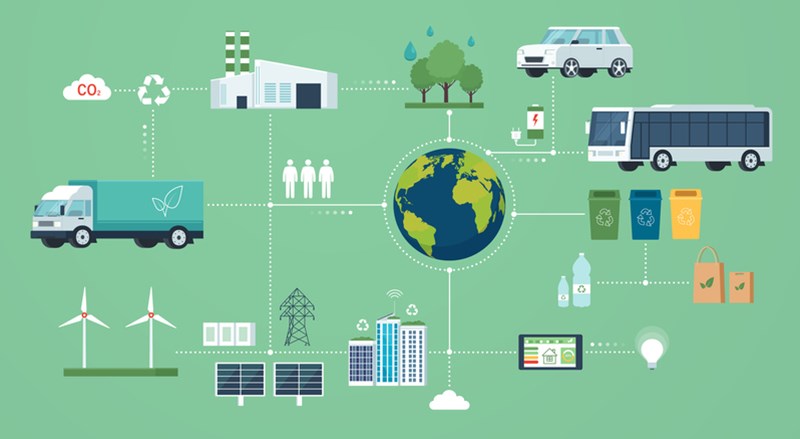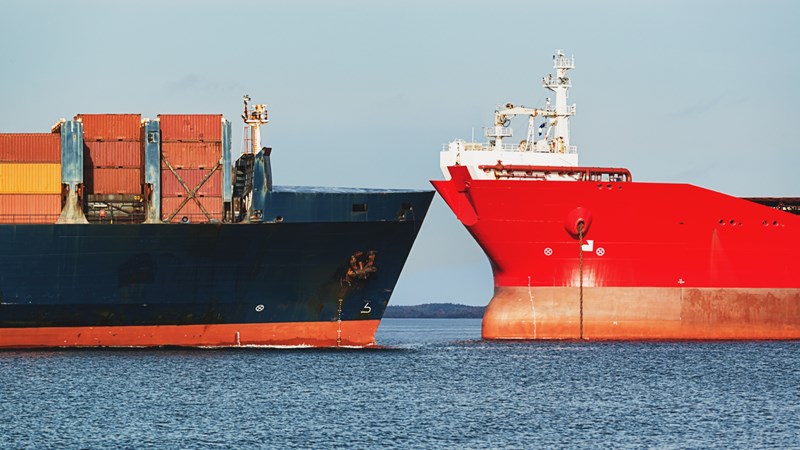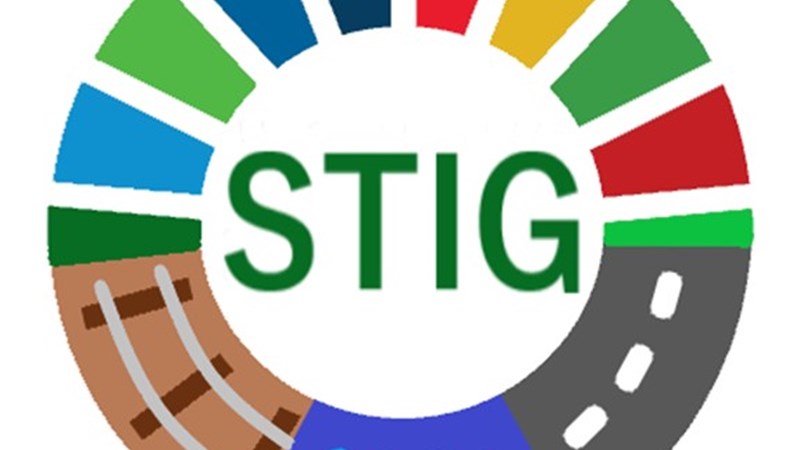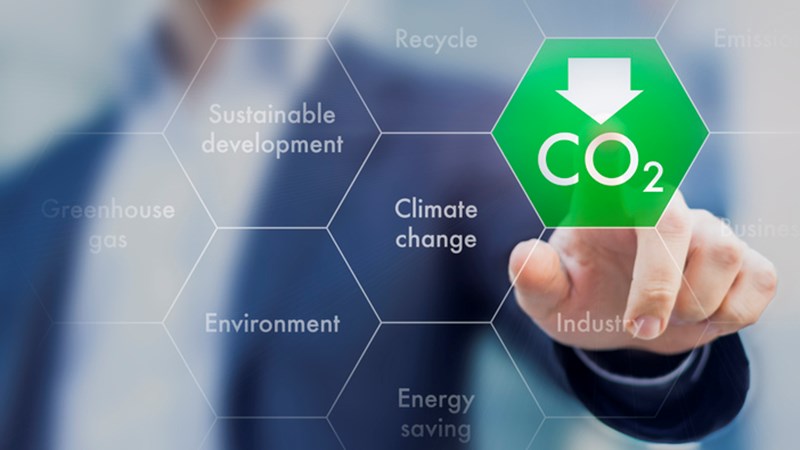Climate and transport; further regulation on the way
October 2021
Necessity of a sustainability transition in transport
The climate crisis is (one of) the greatest challenge(s) of our time. The most recent IPCC report from August 2021 leaves no doubt: The temperature of the earth is rising faster than expected, which will have serious consequences. [1] The report shows that human actions have played an important role in the temperature rise, but also that human actions “still have the potential to determine the future course of climate”. [2]
The international scientists point out that the transport sector is one of the major polluters. [3] In the EU, the transport emissions, including passenger cars, are responsible for approx. 29% of total economy-wide greenhouse gas emissions. [4] As indicated by the European Environment Agency: “There has been a steady overall reduction in greenhouse gas (GHG) emissions in the EU in recent years. However, the transport sector has not followed this general trend and, as a result, its relative contribution to overall GHG emissions in Europe has become more significant. Therefore, although action is needed in all sectors if the EU is to meet emission reduction targets, this is particularly important in the transport sector.” [5]
It is clear that transport will have to become more sustainable. It also intends to do so. The interest groups IATA, for the aviation sector, and ICS, for the shipping industry, support going net zero by 2050. [6]
It is also clear that the transition to zero-emission or even to a completely circular transport is definitely not an easy one. In order to make considerable (further) progress, there is a great need for regulation.
Regulation requests
Several sustainability options exist for the various transport modalities. Low carbon fuels are considered and/or mandatorily described [7], just as minimum requirements regarding the applied technology [8] and more efficient use of the modes of transport. [9] In addition, the implementation of market based mechanisms (“MBM’s”) in the form of a taxation or a levy is getting more and more attention and support. The introduction of (additional) compulsory measures is also requested; not only by environmental NGO’s, but also by key market players. [10] In September 2021, over 150 market leaders insisted on the implementation of MBM’s by 2025. [11] In its report published 4 October 2021, the International Energy Agency also stressed the need for urgent government action. [12] Research has also shown that there is a great need for regulation; more specifically a legal framework with guidance for the following years. [13]
What can we expect in the area of additional rules in the not too distant future?
Expected actions / additional rules
UN Climate Change Conference - COP 26
From 31 October to 12 November 2021, Glasgow will host the 26th annual global climate summit, the United Nations Climate Change Conference of the Parties ("COP 26"). [14] The purpose of COP 26 is to reach international agreements on further coordinated climate action. Action is needed to achieve the goals set in the Paris Agreement, including limiting global warming to 1.5ºC. [15] More specifically, emission reduction, strengthened adaptation, resilience against climate impacts and more substantial funding are on the agenda. The outcome of the conference will have consequences for (regulation in the field of) transport, at least indirectly as the outcome of the discussions will result in additional regulation at other levels.
Under the Paris Agreement, the member states have to provide National Determined Contributions (“NDC”). When more stringent norms are agreed in Glasgow, it is to be expected that the member states will implement further measures to reach those goals. That the NDC will need to become more ambitious is clear beyond doubt. The World Bank has advised that the current NDC are insufficient to meet the goals of the Paris Agreement. [16] The EU also takes the internationally agreed goals into account for its legal framework. It should be noted that in comparison with other legislators its standards are quite ambitious already (this is further discussed below).
International Maritime Organization - further measures
International shipping and aviation are regarded to mostly have been excluded from the Paris Agreement. [17] Rules have been set by the IMO and ICAO respectively.
In the field of international shipping, the IMO is implementing rules to reduce emissions. In June 2021, further 'short-term actions' were agreed for this purpose. It was agreed, for example, that ships must have an Energy Efficiency Existing Ship Index and a Carbon Intensity Index. In essence, these are measures that oblige shipowners to comply with a minimum energy efficiency level. [18] From a climate perspective, the June 2021 meeting of IMO's Marine Environment Protection Committee (“MEPC”) was unsatisfactory. [19] MBM’s were requested, but not agreed upon. The joint proposal of the Marshall and the Salomon Islands to implement a CO2-tax on bunkers of USD 100/mt did not get sufficient support. [20]
Over the summer, the request for MBM’s gained more and more support from bigger players in the market, but also from member states [21] and even from transport interest groups. [22] IMO’s MEPC will meet again from 16 to 20 November 2021. Also given the 'Fit for 55' measures announced by the European Commission (discussed below), it is expected that IMO will also take further measures, possibly by implementing MBM’s.
EU Fit for 55 - package
On 14 July 2021, the European Commission presented its "Fit for 55" package. [23] The package contains several interrelated legislative proposals with measures to achieve the objective of the European Climate Change Act. [24] The "Fit for 55" starting point is that the combined effect of the measures must reduce European greenhouse gas emissions by at least 55% in 2030 compared to 1990 and also limit methane emissions. [25]
The “Fit for 55” proposals inter alia directly focus on transport. The European Commission proposes, inter alia:
- tax emissions from shipping and road transport by means of emission trading;
- encouraging the use of energy from renewable sources by introducing a mandatory minimum percentage of use;
- setting stricter standards for vehicle emissions and specifying an end date for the production of fossil fuel vehicles;
- to oblige a minimum use of renewable fuels in aviation;
- reducing ship emissions by focusing on sustainable fuel and zero-emission propulsion;
- to oblige the use of shore-side electricity in ports for specific ships;
- to adjust the fuel taxation so that fossil fuels are taxed more heavily than renewable fuels;
- to introduce 'carbon border adjustment mechanisms' to protect European parties against competition from less sustainable parties outside the EU.
The European Commission has yet to reach agreement on its proposals with the European Parliament and the Council. The concrete details of the actual legislation that will be implemented have therefore not yet been finalised. However, it is clear that additional legislation will be put in place. Further negotiations will take place in the coming months. It is expected that the package, which may be significantly amended, will enter into force in the not too distant future, although probably not before 2023.
Dutch Climate Change Act – amendments expected
The European Climate Act, As mentioned above, has set the target of a 55% reduction in greenhouse gas emissions by 2030 compared to 1990. The Dutch Climate Act is still based on a 49% reduction. [26] To meet the European standards, the Dutch Code will have to be amended. Further measures will also have to be taken in order to actually meet the target. To meet the reduction target set in the Dutch Climate Act, the Climate Agreement (in Dutch: “Klimaatakkoord”) was concluded in 2018. The Climate Agreement was created in concert with the industry; 150 parties participated. Recent research has shown that the agreements contained in the Climate Agreement only lead to a 34% reduction in emissions. [27] It is therefore clear that the Dutch legislator will need to take further action.
Way forward
In view of the evolving academic research, the fact that climate change consequences are increasingly being felt, the fact that the prescribed targets are not met and given the requests for additional legal rules from various directions, it is clear that legislators will have to and will take further action at several levels in the not too distant future.
Marc van Maanen and Jolien Kruit wrote a paper (in Dutch: “preadvies”) on sustainable and efficient transport for the Dutch Royal Trade Law Association. The book in which the paper is included has been published in October 2021.
* * *
[1] IPCC 2021, Climate change 2021: the physical science basis. Contribution of working group I to the sixth assessment report of the Intergovernmental Panel on Climate Change, Cambridge: Cambridge University Press in print, ipcc.ch.
[2] ‘Climate change widespread, rapid, and intensifying – IPCC’, IPCC, Geneva 9 August 2021, ipcc.ch/2021/08/09/ar6-wg1-20210809-pr/.
[3] Idem, TS, p. 66: "Fossil fuel combustion for energy, industry and land transportation are the largest contributing sectors on a 100-year time scale". cf also "Greenhouse gas emissions from transport in Europe", European Environment Agency, indicator assessment, July 2021: "All transport sub-sectors will need to be much more ambitious if the sector as a whole is to contribute to the goals set out in the European Green Deal.", eea.europa.eu/data-and-maps/indicators/transport-emissions-of-greenhouse-gases-7/assessment
[4] Annual European Union greenhouse gas inventory 1990-2019 and inventory report 2021, eea.europa.eu/publications, 27 May 2021; C. Buysse en J. Miller, ‘Transport could burn up the EU’s entire carbon budget’, The International Council on Clean Transportation, 9 April 2021, theicct.org/blog/staff/eu-carbon-budget-apr2021.
[5] ‘Greenhouse gas emissions from transport in Europe’, eea.europa.eu, 18 December 2020.
[6] ‘Net-Zero Carbon Emissions by 2050’, IATA, 4 October 2021, iata.org/en/pressroom/2021-releases/2021-10-04-03/ (online); ‘Shipping industry sets out bold plan to deliver net zero by 2050’, International Chamber of Shipping, 5 October 2021, ics-shipping.org (online).
[7] For example, the revised Renewable Energy Directive 2018/2001/EU.
[8] For example, Regulation (EU) 2019/631 of the European Parliament and of the Council of 17 April 2019 setting CO2 emission performance standards for new passenger cars and for new light commercial vehicles, and repealing Regulations (EC) No 443/2009 and (EU) No 510/2011.
[9] For example, European Parliament resolution of 27 April 2021 on technical and operational measures for more efficient and cleaner maritime transport (2019/2193(INI)), recital 21, in which inter alia the option of slow steaming is mentioned.
[10] Inter alia: ‘Maersk proposes $450/MT carbon tax for bunker fuel’, shipandbunker.com/news/world, 3 June 2021; S. Hargreaves, ‘Shipowners want “polluter pays” principle at core of carbon pricing proposal’, transportenvironment.org, 29 April 2021; TLN paper, ‘De weg naar een duurzame, slimme en toekomstbestendige transportsector’, September 2020, p. 3; IMF working paper, ‘Carbon Taxation for International Maritime Fuels: Assessing the Options’, WP/18/203 (2018), p. 28.
[11] A. Adamopoulos, ‘Call for market-based measures by 2025 to ensure shipping hits 2050 green target’, Lloyd’s List, 21 September 2021, lloydslist.maritimeintelligence.informa,com (online).
[12] Report IEA 2021, ‘Global Hydrogen Review 2021’, International Energy Agency, October 2021, iea.org (online); “Governments need to take rapid action to lower the barriers that are holding low-carbon hydrogen back from faster growth, which will be important if the world is to have a chance of reaching net zero emissions by 2050”.
[13] Among others:lr.org/en/latest-news/regulation-is-key-to-shippings-green-push-lloyds-list-survey-finds/; S. Chambers, 'Netherlands and OECD make the case for more swift adoption of longer-term emissions regulations', splash247.com, 19 May 2021; ACEA, 'Policy Paper Road freight transport on the way to carbon neutrality', Brussels 2020, p. 2-3; Development, and Innovation Proposals', Journal of Marine Science and Engineering 2021, 415, p. 40; Shell Report, 'Decarbonising shipping: All Hands on deck', 2020.
[14] ukcop26.org.
[15] Paris Agreement dated 12 December 2015, Trb. 2016, 162.
[16] World Bank, ‘State and Trends of Carbon Pricing 2021’, Washington, DC: World Bank 2021, p. 12.
[17] E. Røsaeg, ‘The aviation and shipping exemptions in the Paris Agreement on climate change’, JIML 2021, p. 56; A. Bask e.a., Sustainable and efficient transport. Incentives for Promoting a Green Transport Market, Cheltenham: Edward Elgar Publishing 2019, p. 26.
[18] For an explanation of the measures, see inter alia marine-offshore.bureauveritas.com/newsroom/reducing-ship-emissions and dnv.com/maritime/insights/topics/decarbonization-in-shipping/regulatory-overview.html.
[19] offshore-energy.biz/imos-carbon-measures-face-backlash-as-too-weak/; lloydslist.maritimeintelligence.informa.com/LL1137235/Shipping-industry-left-frustrated-by-MEPC-76-outcome
[20] J. Lo, ‘Pacific islands make lonely case for carbon price on shipping’, climatechangenews.com, 16 June 2021.
[21] S. Chambers, ‘Zero emissions by 2050 target gains greater backing among IMO member states’, Splash 247, 30 September 2021, splash247.com (online). IMF working paper, ‘Carbon Taxation for International Maritime Fuels: Assessing the Options’, WP/18/203 (2018), p. 28.
[22] ICS press release, ‘International Chamber of Shipping sets out plans for global carbon levy to expedite industry decarbonisation’, 6 September 2021, ics-shipping.org/press-release/international-chamber-of-shipping-sets-out-plans-for-global-carbon-levy/.
[23] COM(2021)550 final, Fit for 55.
[24] Press release, 'European Green Deal: Commission proposes transformation of EU economy and society to meet climate ambitions', European Commission, Brussels 14 July 2021. Cf. also Regulation (EU) 2021/1119 of the European Parliament and of the Council of 30 June 2021 establishing a framework for the achievement of climate neutrality, and amending Regulation (EC) No 401/2009 and Regulation (EU) 2018/1999 ("European Climate Act"); preamble at 26 and Art. 4.
[25] COM(2021)550 final, Fit for 55.
[26] Art. 2 paragraph 2 Climate Act.
[27] KBT Climate Crisis Policy Team, Climate Policy Mobility & Transport Advice 3, 2021, p. 3.








